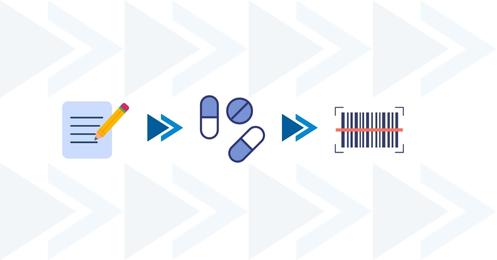The Drug Supply Chain Security Act (DSCSA) was signed into legislation by US President Barack Obama on November 27, 2013, ushering in a new age of transparency and accountability in the pharmaceutical industry. The DSCSA outlines several phases aimed at establishing an interconnected platform that will successfully identify and trace specific prescription drugs as they move through the supply chain. Upon the completion of the ten year implementation process, the resulting system in place will enable the communication of information at the individual package level identifying where a specific drug has been at different stages of the supply chain. The goal of this transition is to permit the verification of the legitimacy of the drug products, facilitate more efficient and timely recall procedures and protocols, and enhance the detection and notification of illegal products.
As a consequence of the overall length and breadth of the changes proposed by the DSCSA, a significant amount of responsibility falls on pharmaceutical distribution businesses. Over the next 8 years (by 2023), they will be called upon to work in cooperation with the Federal Drug Administration (FDA) to help develop this new system. Essentially, any company that manufactures, distributes, dispenses or repackages pharmaceuticals and is regulated by the FDA will be effected by the act. In order to achieve the goals outlined in the DSCSA, there will be a number of requirements that wholesalers and distributors must meet:
- Product Identification: Unique product identifiers (i.e. barcodes) that can be easily read electronically will be placed on certain prescription drug products. This will be implemented over the following three years and will itemize individual packages of certain prescription drugs.
- Transaction History/Traceability: Formerly “Pedigree Tracking”, additional transaction information and statements must now be provided when a product is moved between manufacturers, repackagers, dispensers, and wholesale distributors. Essentially, information regarding a drug and who handled it at every point in the supply chain must be available at any given time.
- Product Verification: Processes must be in place to be able to properly verify the product identifier (i.e. barcode) on certain prescription drug packages. This is to ensure that products considered “suspect or illegitimate” are being handled properly. Starting in 2017, there will be additional changes made depending on the trading partner once serialization of products is implemented.
- Detection, Response & Notification: Wholesalers/Distributors must be able to accurately and efficiently investigate a drug that has been identified as suspect, meaning that it is potentially counterfeit, unapproved, or dangerous. In addition, systems must be in place to properly notify the FDA and other parties if an illegal drug is found in the supply chain.
- Wholesaler Licensing: Wholesale drug distributors must report their licensing status and contact information to the FDA, which will be made available in a public database. All parties must now confirm they are authorized to handle applicable products with credentials acceptable to the FDA. As such, it is the responsibility of all parties involved to ensure their partners are authorized and in good standing.
- Third Party Logistics Provider Licensing: Those businesses that provide storage facilities and logistical operations related to drug distribution will need to obtain a state or federal license
Since the act was signed in 2013, pharmaceutical distribution businesses have been keeping a close eye on the new requirements they need to comply with in the coming months and years. Due to the size and scale of such a long winded and detailed implementation process, many pharmaceutical wholesalers and distributors may find themselves overwhelmed with the changes taking place. Fortunately, pharmaceutical accounting software solutions exist that specialize in medical applications and have components available that will ensure your business complies with the new standards. Modules such as pedigree management/transaction history, license expiry date management, and customer SKU classification are each examples of functionality inherent in pharmaceutical accounting software that will help alleviate any stress that may arise as a result of the new act.
As the DSCSA works to alter the landscape of the pharmaceutical industry, software developers will work tirelessly alongside to create a tailored solution to serve the changing needs of pharmaceutical distribution businesses across the US. It will require a determined effort from all parties involved, but at the conclusion of the ten year implementation period the result will be an enhanced ability to protect consumers from exposure to drugs that may be counterfeit, stolen, contaminated or dangerous.










